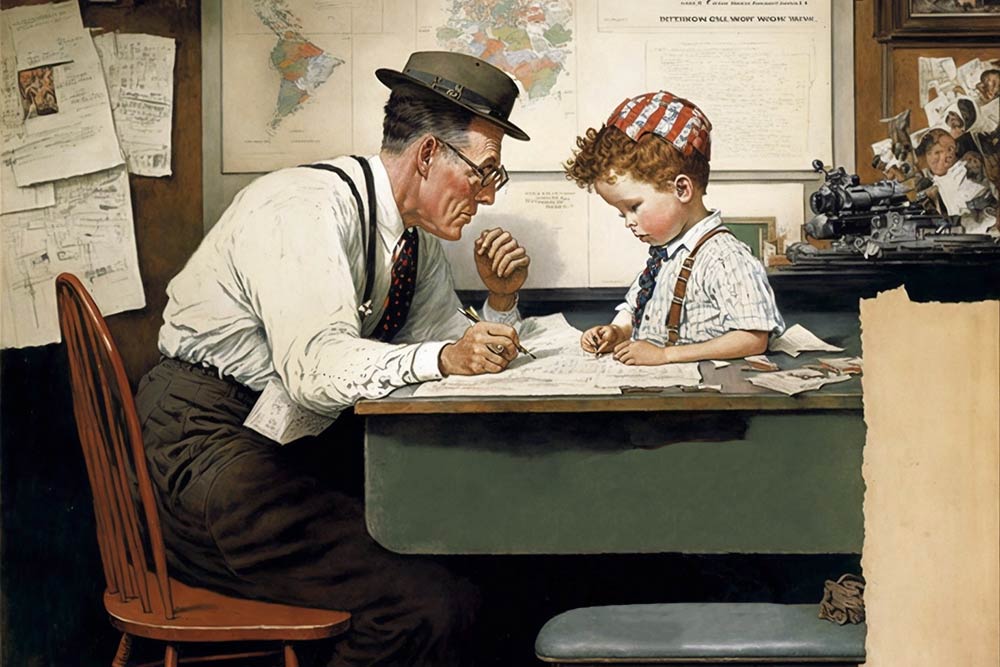Welcome to our blog post about the fascinating topic of tone of voice in writing. As writers, we all know that choosing the right tone of voice can make all the difference in how our message is received by our readers. The tone of voice sets the mood, establishes our credibility, and can help us to connect with our audience on a deeper level.
In this post, we’re going to explore the power of tone of voice by presenting two articles, each with its unique combination of tone. These articles will demonstrate how the same message can be conveyed in different ways by using different tones of voice.
Our first article will take a serious and informative tone. It will provide valuable insights into a current topic of interest and will be well-researched and informative. The tone of voice will be formal and professional, and the article will be suitable for academic or professional contexts.
Our second article will be more lighthearted and entertaining. It will take a playful and humorous tone and will be geared towards a general audience. The article will be engaging and easy to read, and it will convey its message in a way that is both fun and informative.
By presenting these two articles side by side, we hope to illustrate the importance of choosing the right tone of voice for your writing. We’ll explore the nuances of each tone and how they can be used to effectively convey a message to your readers. Whether you’re writing for a formal or casual audience, this post will provide valuable insights into the power of tone of voice in writing. So sit back, relax, and enjoy our two articles, each with their unique combination of tone of voice.
Essay 1 – Tone: Educational and Witty
Hey there! Let’s talk about the amazing ways in which tone of voice can be used to enhance your writing style.
Have you ever read a piece of writing and found yourself drawn in by the author’s tone of voice? That’s because the tone of voice plays a crucial role in how readers perceive and engage with your writing.
Firstly, a friendly tone of voice can make your writing more approachable and welcoming. When you write in a friendly tone, you create a connection with your reader and help to put them at ease. This is especially important when writing for a general audience, as you want to ensure that everyone feels included and valued.
On the other hand, an energetic tone of voice can add a level of excitement and enthusiasm to your writing. By using an energetic tone, you can capture your reader’s attention and keep them engaged throughout your piece. Whether you’re writing about a complex topic or sharing a personal story, an energetic tone can help to convey your message with passion and enthusiasm.
However, it’s important to note that tone of voice can also be used in more serious or professional settings. A formal tone of voice can lend credibility and authority to your writing, making it more suitable for academic or business contexts. By using a formal tone, you can demonstrate your expertise on a particular subject and help to establish yourself as a trusted source of information.
Overall, the tone of voice is a powerful tool that can be used to enhance your writing style and connect with your audience. By experimenting with different tones and styles, you can find the perfect balance that best suits your writing and message. So go ahead, have some fun with your writing, and let your tone of voice shine through!
Essay 2 -Tone: Friendly & Energetic
Hello, and welcome to this educational and witty discussion on the use of tone of voice in writing styles. So, why is tone so important in writing?
Simply put, tone is the way in which an author conveys their attitude towards a subject matter. It can be used to establish credibility, engage readers, and create a particular mood or atmosphere. In fact, a skilled writer can use tone to bring their words to life and make them jump off the page.
Now, let’s get witty. Imagine a piece of writing that is meant to be humorous. Without the proper tone, the humor can fall flat or even be misinterpreted. By using a playful and lighthearted tone, a writer can let their readers know that it’s okay to laugh and enjoy the piece. On the other hand, if the tone is too serious or formal, the humor can get lost in translation.
Similarly, when it comes to educational writing, tone is critical to the success of the piece. Using a clear and concise tone can help to simplify complex topics and make them more accessible to readers. This is especially important when writing for a general audience, as you want to ensure that your readers can understand and retain the information you’re presenting.
But wait, there’s more! Tone can also be used to create a particular mood or atmosphere in writing. For example, if you’re writing a horror story, a dark and foreboding tone can help to build suspense and create a sense of dread. Or, if you’re writing a love letter, a tender and affectionate tone can convey the depth of your emotions and create a romantic atmosphere.
In conclusion, tone is a vital component of effective writing. It can be used to entertain, educate, and inspire, and the possibilities are truly endless. So, whether you’re writing a comedic blog post or a research paper, remember that tone is your secret weapon for connecting with your audience and conveying your message with style and wit.
Now that we have discussed the importance of tone of voice in writing, let’s dive deeper into the different types of tones that can be used to effectively convey a message to your readers. There are many different styles of tone of voice, each with their unique characteristics and intended effects. In this list, we will explore some of the most common tone of voice styles used in writing, including formal, conversational, persuasive, informative, witty, humorous, empathetic, and more. By understanding these different styles of tone of voice, you can create writing that resonates with your audience and delivers your message in the most effective way possible.
- Formal – this tone is typically used in academic or professional writing where a serious, authoritative tone is required.
- Informal – a conversational tone that is more relaxed and casual, often used in personal letters or emails.
- Friendly – a warm, welcoming tone that helps to build a connection with the reader.
- Authoritative – a commanding tone that conveys confidence and expertise on a topic.
- Humorous – a lighthearted tone that uses humor and wit to engage the reader.
- Sarcastic – a tone that uses irony and sarcasm to make a point or convey humor.
- Cynical – a tone that expresses a pessimistic or distrustful view of the world.
- Inspirational – a tone that motivates and inspires the reader to take action.
- Persuasive – a tone that uses logic and reasoning to persuade the reader to a certain point of view.
- Energetic – a tone that is lively and enthusiastic, often used to inspire or excite the reader.
- Educational – a tone that teaches or explains a concept in a clear and concise manner.
- Intimate – a tone that creates a sense of closeness or familiarity with the reader.
- Witty – a tone that uses cleverness and humor to engage the reader.
- Optimistic – a tone that expresses a positive outlook on life or a particular situation.
- Pessimistic – a tone that expresses a negative outlook on life or a particular situation.
- Confident – a tone that exudes self-assurance and certainty.
- Condescending – a tone that is patronizing or talks down to the reader.
- Sincere – a tone that is honest and heartfelt, often used in personal or emotional writing.
- Nostalgic – a tone that expresses a longing for the past or for something that has been lost.
- Melancholic – a tone that expresses sadness or melancholy.

Daniel is the founding CEO of SDM, created in 1999.
Meet Daniel Van Bogelen, a seasoned entrepreneur with a passion for marketing, business, and website design. With 12 years of marriage and four children, Daniel brings a wealth of personal and professional experience to the table. As a blogger, she is dedicated to helping business owners become more successful, knowledgeable, and confident through his insightful and engaging articles.
Daniel’s journey into entrepreneurship began with a desire to help others achieve their goals. Over the years, he has honed his skills and knowledge through practical experience, rigorous research, and staying up to date with the latest trends and best practices in his industry. As a result, he has become a trusted source of information for business owners who want to take their ventures to the next level.
In his articles, Daniel covers a wide range of topics related to marketing, business, and website design. From SEO tips and social media strategies to effective branding and customer engagement, he shares valuable insights and practical advice that business owners can put into practice right away. By demystifying complex concepts and breaking them down into actionable steps, Daniel helps his readers gain the knowledge and confidence they need to succeed.
What sets Daniel apart from other bloggers in his field is his deep commitment to his readers’ success. He not only shares his expertise but also takes the time to engage with his audience and build meaningful relationships with them. By listening to their feedback and responding to their questions, he creates a sense of community and support that is rare in today’s digital landscape. For business owners who want to stay ahead of the curve and achieve their goals, Daniel’s articles are a must-read.

